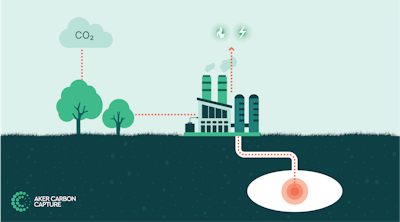Introduction
On 5 June, the German Federal Ministry for Economic Affairs and Climate Action released its funding program for climate protection contracts where energy-intensive industrial sector companies can enter into a bidding process for climate protection contracts. The program comes at a time of rapid development in the CCUS market and policy environment, where several EU climate policy amendments have entered into force or are on the brink of being enacted, in particular Fit for 55 ETS-changes, and many industrial countries face scrutiny for their emission reducing progress and goals as National Energy and Climate Plans (NECP) are being finalized.
Climate protection contracts explained
Climate protection contracts are intended to initiate climate-friendly production processes in energy-intensive industrial sectors, for example in the steel, cement, pulp & paper, or glass industries. Climate protection contracts compensate for the additional costs compared to conventional processes where climate-friendly production processes cannot yet be operated competitively. Most of the funds should be available to hedge against unexpected cost fluctuations. Companies that seek funding first enter into a bidding competition for climate protection contracts. The best and, in particular, the cheapest bidder, meaning the lowest abatement cost, wins. Under the climate protection agreements, both investment and operating costs will be funded over a period of 15 years, pursuant to conditions where companies receive funding based on the additional costs of the climate-friendly facility compared to a conventional counterpart. The funding is confirmed to be in the mid double-digit billion range, with several outlets pointing to the €50 billion mark.
Facilities with otherwise unavoidable process emissions, where greenhouse gas emissions reductions are predominantly achieved through CCS or CCU, are eligible for funding if certification of long-term storage or sufficient product binding can be obtained, or if CCS or CCU measures are recognized as emission reductions under the EU ETS. The connection to necessary transport and storage infrastructure must also be sufficiently secured. The requirements for the verification of permanent storage/binding of carbon dioxide are governed by the provisions of Commission Implementing Regulation (EU) 2018/2066 or relevant EU requirements. Regarding the certification of long-term storage or product binding, the current EU requirements apply. The upcoming German Carbon Management Strategy, set to be published this autumn, defines which process emissions are deemed unavoidable and which facilities with otherwise difficult-to-avoid process emissions should also be eligible for government funding. These provisions apply to this funding guideline.
Subsidy scheme setup
- The funding program uses an auction process: companies have to offer how much government support they need to avoid one tonne of CO2 with their transformative technology
- As a result, only those companies that convert their production at a particularly low cost will be awarded a climate protection contract
- The usual documentation and verification obligations, which have led to a high burden on companies and time-consuming approval procedures, are no longer applicable within the legal framework
- The subsidized companies are paid variable subsidies, the amount of which is calculated according to the respective additional costs of the climate-friendly plant compared to the conventional plant
- If climate-friendly production becomes cheaper than conventional production, the payment is to be reversed: the subsidized companies will then pay additional revenue to the state
- If the green product has become price-setting, the climate protection contract can be repealed
- The basis of the funding is a fixed contract price per avoided tonne of CO2, determined through an auction process
- The contract price is dynamic: depending on additional factors (such as the ETS price or the price of energy carriers), a certain amount is added to or subtracted from the contract price to determine the payment
What are the next steps and what needs to happen?
Companies wishing to submit a bid in the first bidding process must participate in the preparatory procedure. The preparatory procedure lasts two months. In the greater EU context, it is subject to State Aid regulations, which have already been relaxed due to the Green Deal Industrial Plan and overall geopolitical situation. The German Federal Ministry for Economic Affairs and Climate Action has also been in close contact with the European Commission in the development of the climate protection contracts funding program.
CCS and CCU are among the most economically proven technologies to abate CO2 emissions. The climate protection contracts represent an important first step and opportunity for Germany to kick-start its CCUS industry while also delivering on its climate ambitions. Other European nations such as the Netherlands and Denmark have become CCUS leaders due to sufficient support mechanisms. Under the right circumstances, climate protection contracts could have the same effect and solidify Germany as an attractive destination for CCUS projects. Current market trends suggest several project developers preferring OPEX support as opposed to CAPEX upfront investments, which many enacted or proposed policy schemes have recognized as of late, an example being introduced CCfD mechanism in the forthcoming EU Innovation Fund changes, the SDE++, and tax credits in the Inflation Reduction Act 45Q. An OPEX-targeting support mechanism can provide the predictability many project developers look for, by covering the gap between investment and projects costs, and a reference price.
Conclusion
The proposed climate protection contracts with a built-in carbon contract for difference approach, offers German industry a prominent opportunity to take steps to decarbonize with CCUS being one of the most eligible technology solutions. CCUS is important for achieving net-zero emissions by 2050 and mitigating the worst impacts of climate change. Germany has a unique opportunity to become a leader in CCUS, as it has a large industrial sector that needs to decarbonize, a strong innovation ecosystem that can provide CCUS solutions, and a strategic location that can enable cross-border cooperation on CO2 transport and storage. However, Germany faces significant challenges in scaling up CCUS, such as lacking regulation and policy, and insufficient CO2 transport infrastructure. To overcome these challenges, Germany needs to implement a comprehensive and coherent strategy for CCUS that includes financial support and incentives, public engagement and education, and infrastructure development with facilitating regulation. With several initiatives ongoing in the EU to elevate the CCUS momentum to new heights, such as the European Commission proposed Net Zero Industry Act and EU CCUS Carbon Management strategy due November, European nations should position themselves to appropriately reduce emissions from their hard-to-abate sectors through CCUS. The climate protection contracts represent a significant opportunity to do so.



